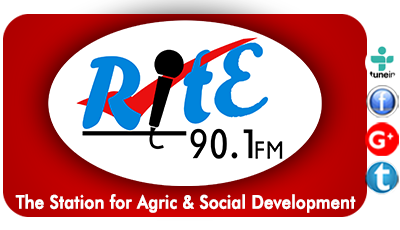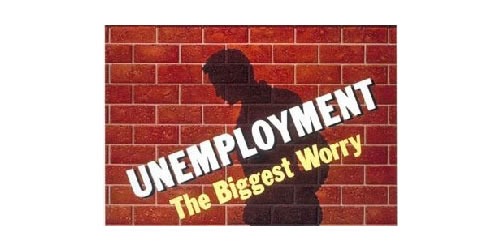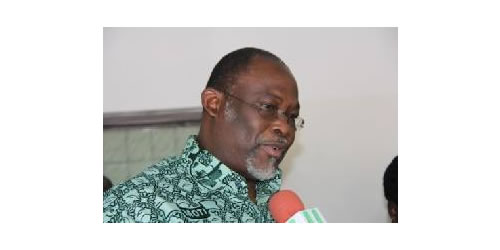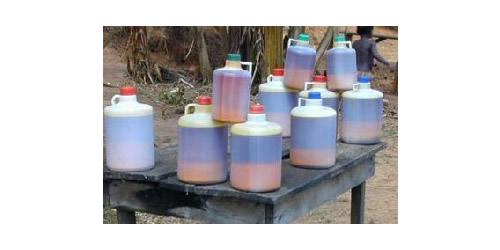As Ghana’s economy declines, commodity prices expected to remain weak in 2015
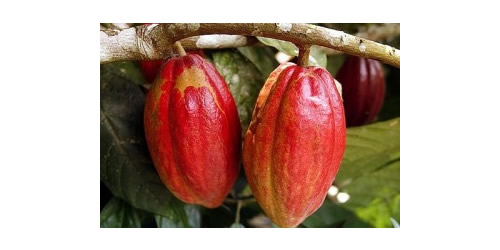
Ghana’s economy for a long time has depended on commodities, particularly cocoa and gold, and more recently on oil since commercial production began in December 2010, however, the country’s economy has been hit by the volatilities in global commodity prices.
Mr. Seth Terkper told the Financing the Future Conference in Accra in March 2015 that since the country attained its middle income status, access to concessional financing has decreased significantly.
“Inflows from our development partners are highly volatile showing a cyclical effect (especially in election year when DPs adopt a wait-and-see approach to aid delivery). These developments together with government’s quest to sustain its national economic policy objectives (as contained in the Ghana Shared Growth and Development Agenda), are compelling us to diversify our sources of financing and also improve on its delivery,” he said.
According to him, the Ghanaian economy has been stable over three decades and expanding, combining improvements in macroeconomic management, progress in social intervention and strong export growth in the last decade.
“Economic growth has pushed Ghana into the Lower Middle Income bracket and accelerated poverty reduction. Consistent economic growth since 2000 has nearly cut poverty levels in half, as of 2006, using 1990 as the base year. Ghana is consequently on track and has met her MDG target of halving extreme poverty well before the 2015 target,” he added.
Mr. Terkper admitted that in spite of the recent strong economic growth and prospects, the Ghanaian economy has had to contend with some challenges.
“There has been policy mismanagement (eg. wages and subsidy and external shocks. Poverty levels are still relatively high, the country’s infrastructure base needs to be expanded (despite investments that has exposed the country to high debt levels in recent years; the economy needs to be upgraded to keep pace with its middle income status. Given the country’s current fiscal space constraint, there is a significant financing gap,” he said.
Ghana’s total export earnings by May 2015 was $963 million. The country earned $319 million from gold, $214 million from cocoa and $188 million from oil.
Meanwhile, the country’s total exports bill amounted to a little over $1 billion. Oil imports amounted to $195 million and non-oil imports cost the country $860 million.
While presenting the mid-year budget review to Parliament last the minister said the country is to expect a decline in economic growth from an estimated 3.9 per cent to 3.5 per cent over the next six months.
The country’s 2015 targeted budget deficit will increase from 6.5 per cent of Gross Domestic Product (GDP) to 7.3 per cent, with an upsurge in inflation from 11.5 per cent to 13.7 percent, he grimly announced.
According to the minister, measures had been put in place to maintain recent gains, with short term and structural elements to rope in high foreign-financed capital expenditure, rising inflation, the impact of gold and cocoa prices, revisions in the benchmark crude oil prices and the refinancing of existing debt stock.
Apart from borrowing the Ghana government heavily depends on commodity revenues. However, the World Bank has forecast that the prices of commodities are expected to remain weak through 2015, even though oil prices has seen a slight rebound.
The World Bank has indicated that it is nudging up its 2015 forecast for crude oil prices from $53 in April to $57 per barrel after oil prices rose 17 per cent in the April-June.
In it’s Commodity Markets Outlook, the Bank reports that energy prices rose 12 per cent in the quarter, with the surge in oil offset by declines in natural gas (down 13 per cent) and coal prices (down four per cent).
However, the Bank expects energy prices to average 39 per cent below 2014 levels. Natural gas prices are projected to decline across all three main markets—US, Europe, and Asia—and coal prices to fall 17 percent. Excluding energy. The Bank also reports a two per cent decline in prices for the quarter, and forecasts that non-energy prices will average 12 per cent below 2014 levels this year.
“Demand for crude oil was higher than expected in the second quarter. Despite the marginal increase in the price forecast for 2015, large inventories and rising output from OPEC members suggest prices will likely remain weak in the medium-term,” John Baffes, Senior Economist and lead author of Commodity Markets Outlook was cited as saying.
According to the Bank, Iran’s new nuclear agreement with the US and other leading governments, if ratified, will ease sanctions, including restrictions on oil exports from the Islamic Republic of Iran.
“Downside risks to the forecast include higher-than-expected non-OPEC production (supported by falling production costs) and continuing gains in OPEC output. Possible upside pressures may come from closure of high-cost operations—the number of operational oil rigs in the US is down 60 per cent since its November high, for example—and geopolitical tensions,” it says.
The Outlook reports that agricultural prices fell 2.6 per cent in the quarter, due to large declines in food commodities – especially edible oils and grains – on further improvements of supply conditions and despite some adverse weather in North America and El Niño fears.
“The World Bank expects agriculture prices to average 11 per cent below 2014 levels this year, revised downward from 9 per cent in April,” it adds.
Fertilizer prices, a key cost for most agricultural commodities, are likely to decline five percent on weaker demand and ample supply, the report states.
Though the country is optimistic about the economy picking up with the increasing level of confidence following the International Monetary Fund (IMF) bailout, the tailwinds are likely to hold it down for a while.
Source: ghanabusinessnews
